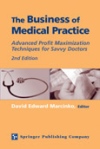About Career Management in Nursing
This is a guide for picking a career in nursing. It covers the wide range of different options available to those interested in pursuing health care–someone considering the field for the first time might not know that there are so many different types of nursing degrees and nurse positions!
More info: http://www.onlinedegrees-benedictine.com/nursing/master-in-nursing.asp
The text is clear, the color palette is consistent and not distracting, and the coverage of each potential path is comprehensive.
Critique
What is good is that visualizable data has been included: all of the text in red could be turned into a chart or graph showing the data instead of writing about it. This would give the guide a bit more visual intrigue and lighten it up a bit, too. Being inundated with large amounts of text is not much different from reading a list or manual–infographics make the data fun to read. A few examples of how the text might be visualized:
– The statistic about 78% of NCLEX-RN test-takers passing could be represented by using a thermometer, mock-up medical chart on a clip board, pencil or other related instrument and showing that 78% as a portion out of 100.
– Since there are 2.6 million RNs in the United States, and it’s said that that is the largest population of any health care occupation, it could be fun to see how many dentists, medical doctors, surgeons, etc. there are in comparison. These numbers could together be represented on a line chart as a heart monitor, or perhaps with different colored scrubs representing each occupation (either as a bar chart or having a portion of each of them shaded according to population).
Assessment
As a guide, we’d give this an A, as it’s very informative. But, it would benefit from the addition of more data before we could grade it as an excellent infographic.
Source: http://nursinglicensemap.com/pathways-in-nursing-infographic/
Channel Surfing the ME-P
Have you visited our other topic channels? Established to facilitate idea exchange and link our community together, the value of these topics is dependent upon your input. Please take a minute to visit. And, to prevent that annoying spam, we ask that you register. It is fast, free and secure.
Conclusion
Your thoughts and comments on this ME-P are appreciated. Feel free to review our top-left column, and top-right sidebar materials, links, URLs and related websites, too. Then, subscribe to the ME-P. It is fast, free and secure.
Speaker: If you need a moderator or speaker for an upcoming event, Dr. David E. Marcinko; MBA – Publisher-in-Chief of the Medical Executive-Post – is available for seminar or speaking engagements. Contact: MarcinkoAdvisors@msn.com
OUR OTHER PRINT BOOKS AND RELATED INFORMATION SOURCES:
- PRACTICES: www.BusinessofMedicalPractice.com
- HOSPITALS: http://www.crcpress.com/product/isbn/9781466558731
- CLINICS: http://www.crcpress.com/product/isbn/9781439879900
- ADVISORS: www.CertifiedMedicalPlanner.org
- FINANCE: Financial Planning for Physicians and Advisors
- INSURANCE: Risk Management and Insurance Strategies for Physicians and Advisors
- Dictionary of Health Economics and Finance
- Dictionary of Health Information Technology and Security
- Dictionary of Health Insurance and Managed Care
Filed under: Career Development | Tagged: careers in nursing, CRNA, LPN, nurses, nursing, Nursing License Map, nursing schools, RN | 2 Comments »























